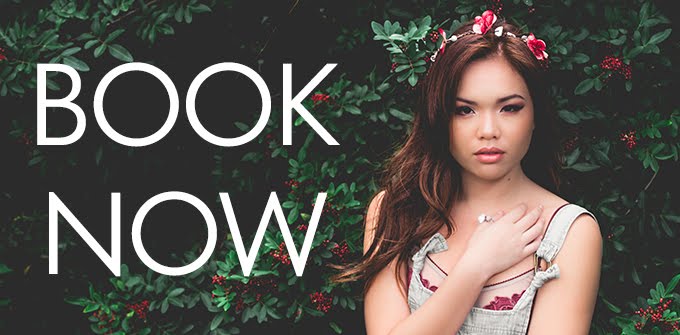After purchasing the very inexpensive Coco Ring Flash and reviewing it for macro work, I hoped to write a follow-up post describing how effective it was for portraiture. This variation of ring flash is most similar to ExpoImaging's first iteration of it's Rayflash and was designed to be used attached to a speedlight "on camera". I tried explaining in my original review that it was incompatible with wider focal lengths because most lenses do not clear the front. Below are a few images of the ring flash attached to my OMD EM5 which show what I was trying to iterate.
The ring flash was designed for traditional DSLRs which are larger than most mirrorless systems out there and it may not be compatible with your camera (for example, it is not compatible with my Panasonic GX7). As for flashes, I have successfully used the unit with a Yongnuo YN560 II and Yongnuo YN 560 III, both on and off camera.
Despite these caveats, it has proven to be an effective light modifier in many different scenarios in and out of the studio, check out the examples below.
Back-lit Subject
Situations in which your subject is back lit can prove challenging especially if you are relying on your camera to meter the scene. One solution is to use spot metering to ensure your subject is exposed properly and deal with an overexposed background later. Another option is to switch to manual mode and expose for "the environment", which will likely result in your subject being underexposed. The solution is to then use artificial light to properly expose your subject. The maximum sync speed for flash photography is usually 1/250 so you will need to stop your lens down (f/2.8 - 4) to properly expose for the surroundings or use an ND filter and shoot wide open. In the examples below, I shot at the maximum sync speed and stopped down between f/2.8 and f/5.6.
Subject in the Shade
While reading through the Lighting 101 course provided by the amazing Strobist website I was particularly inspired by the section describing how to balance flash with ambient lighting. You should definitely check out the article but basically you underexpose your shot and use artificial lighting to properly expose your subject. In doing so, you add a bit of depth to your image. The article describes the use of an umbrella but I found the ring flash gives interesting results as well. The examples below were shot with the ring flash while the model was in the shade and were shot between f/4 and f/8.
As a Key Light in the Studio
Ring flashes are popular in fashion photography because the "head on" light eliminates the shadows usually seen when lights are above or on either side of the model. Attaching the ring flash to a speedlight that is off camera allows you to use it as a key light the same way an umbrella or softbox would be used and introduce shadows to your photos. I find that the ring flash is a great alternative to a more traditional light modifier because its output is "narrow" like that you see from a snoot. Taking the ring flash off camera also allows you to illuminate the subject head on but take the photo at a different angle (as shown in the second example below). In order to accomplish this you will need a wireless trigger (I use Yongnuo's YN 560 TX) or set your speedlight to slave mode and trigger it using your camera's built in flash (works well with my GX7 because I can point it towards the ceiling).
Conclusion
 |
| Speedlight with green gel camera left, ring flash camera right |
Considering the $50 price tag and its versatility, it is very hard for me not to recommend this light modifier. The only real downside is its size compared to the EM5 and that theres no guarantee it will fit every camera. Another thing to note is that the light that the ring flash emits is a bit on the cool side (like silver umbrellas I have used) but its nothing that cannot be fixed in post.
Sam
If you live in, or are traveling to Florida and would like to schedule a photo-shoot, I am currently offering portrait services in and around Central Fl. Check out more of my work at www.samgoldphotography.com
Sam
If you live in, or are traveling to Florida and would like to schedule a photo-shoot, I am currently offering portrait services in and around Central Fl. Check out more of my work at www.samgoldphotography.com


































